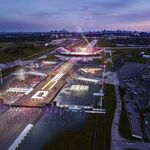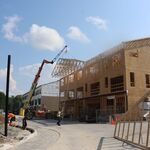adys123
Active Member
The curves have been optimized, and no where on that line will curves be as sharp as on Line 1. Minimal impacts to speed are expected, as they will spend most of their time accelerating and decelerating between the stations. Lower speeds will minimize impacts to maintenance, the challenges on the existing infrastructure point more to neglect.And here we are in 2024 ,constructing the Ontario line to have sharp, curved corners from East Harbour to Moss Park.
-Hamilton LRT (Dundrun st.)
-GO Bowmanville Extension
Metrolinx loves to make sure our trains are as slow as possible while increasing maintenance costs.




